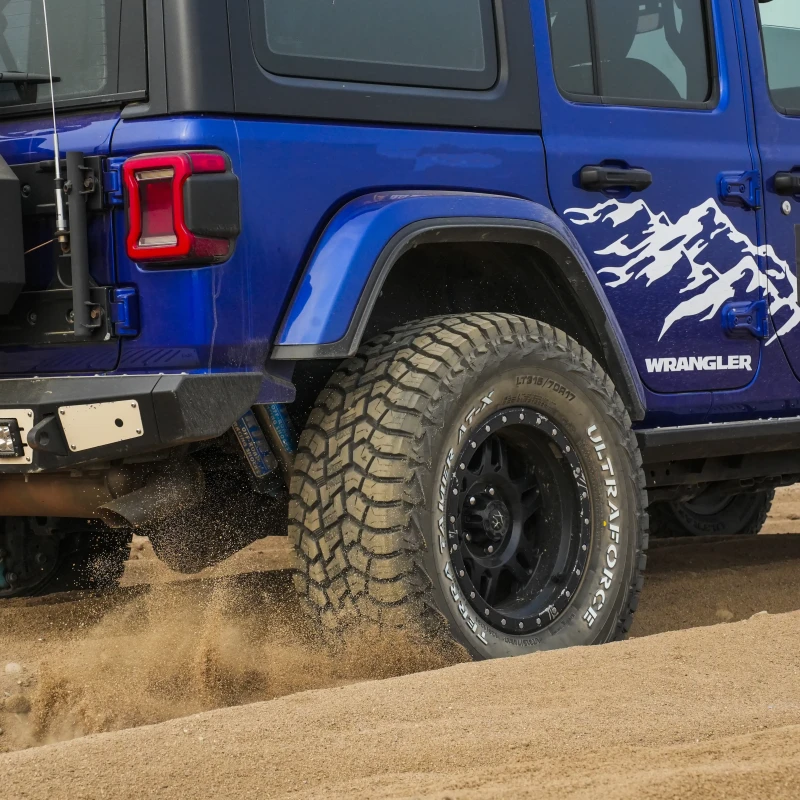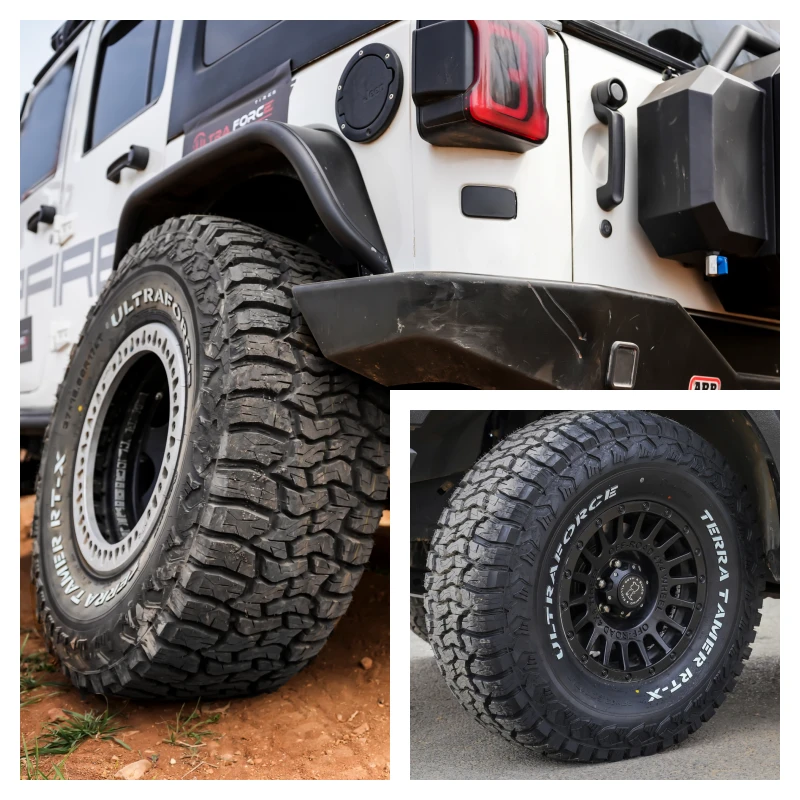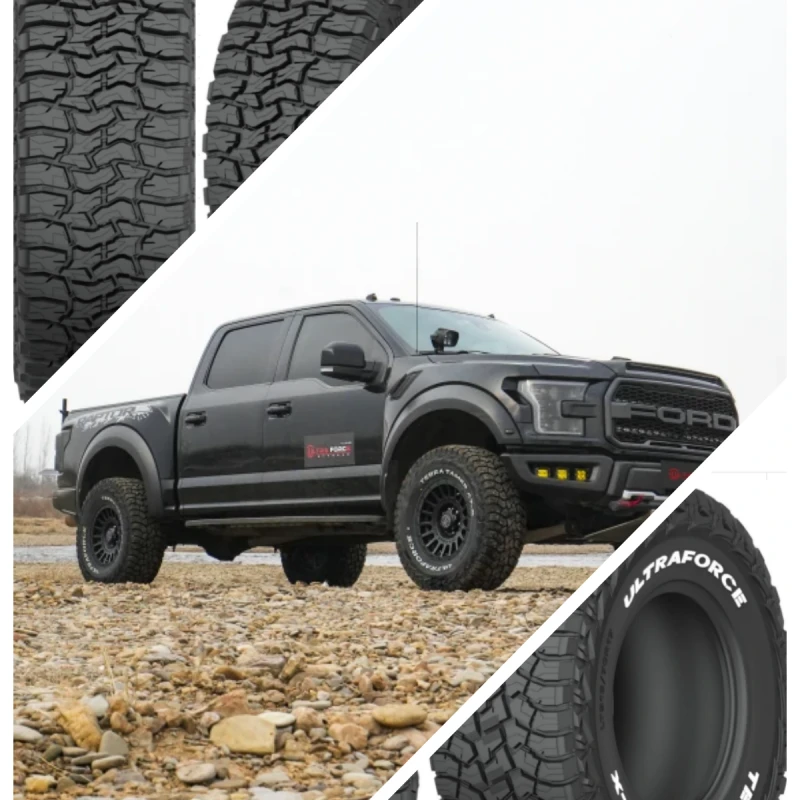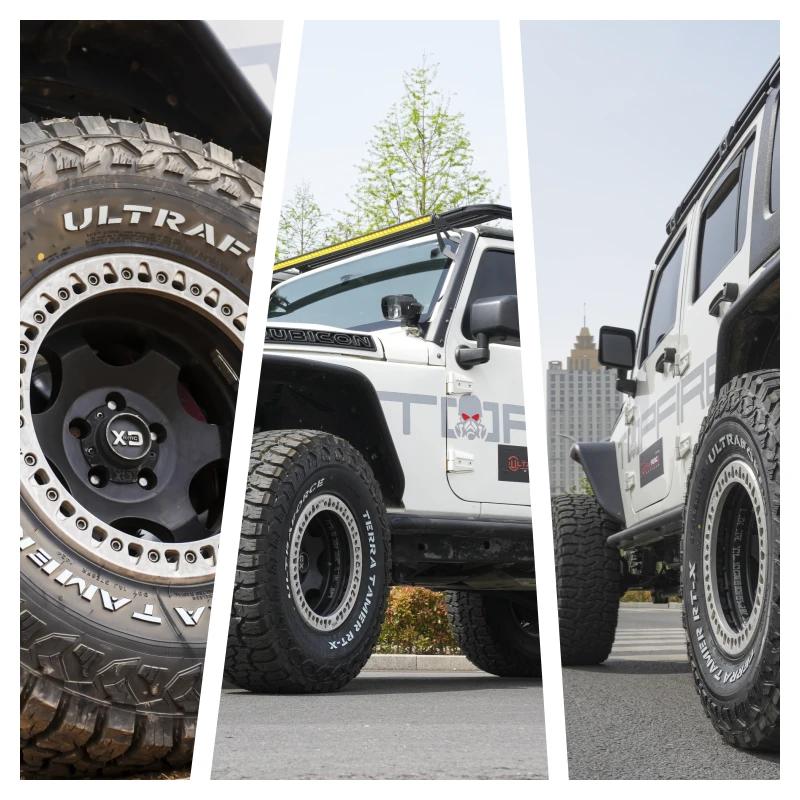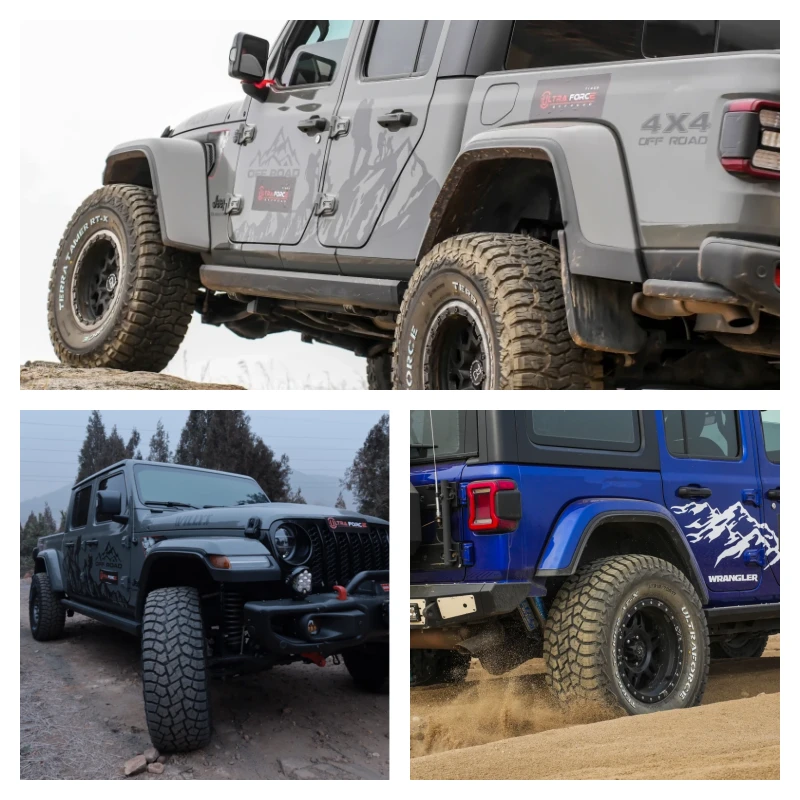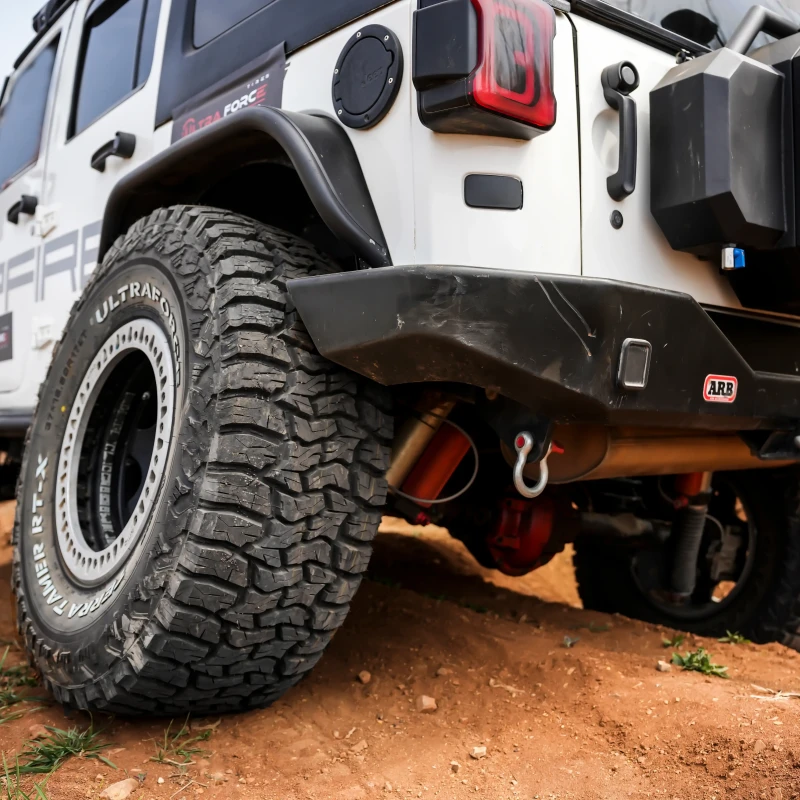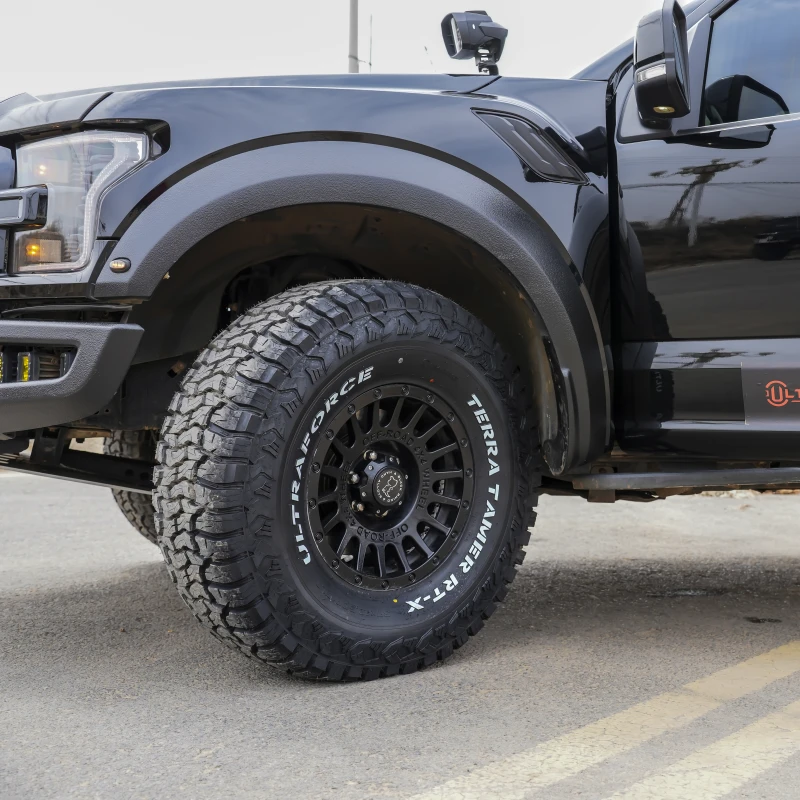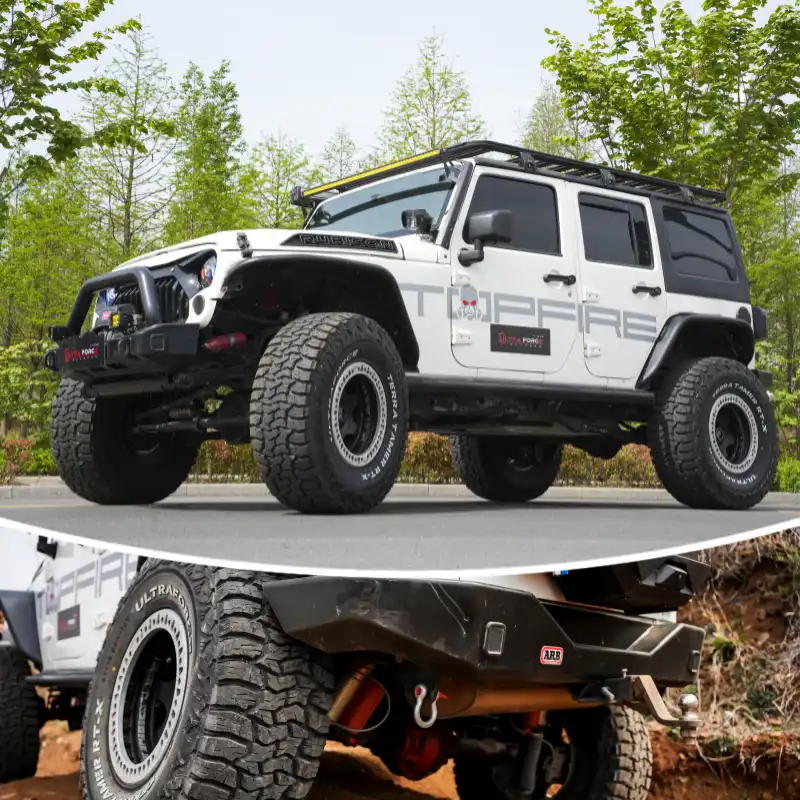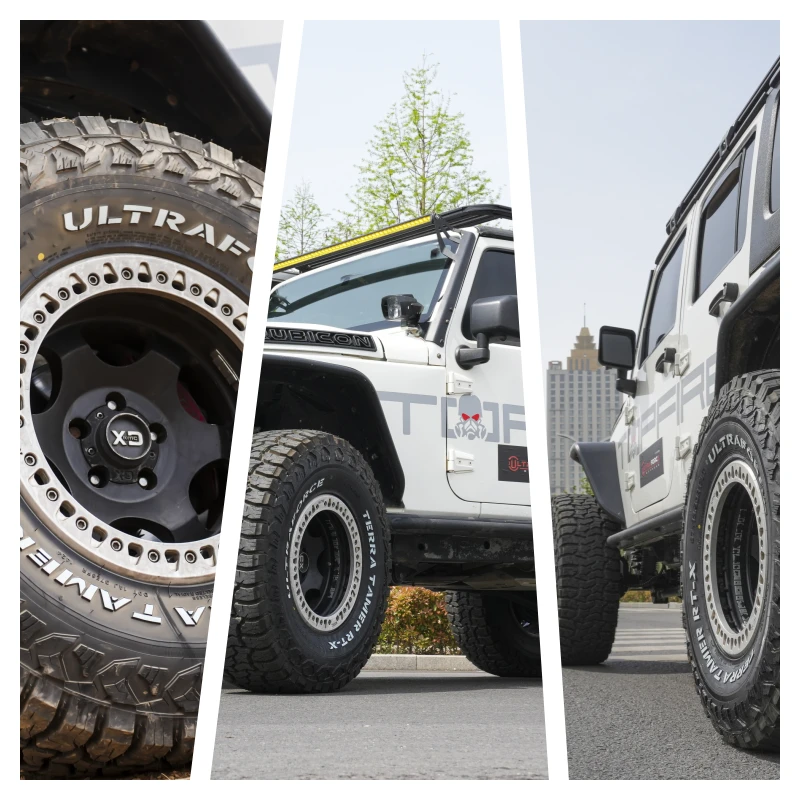How Long Do Mud Tires Last on the Road?
Mud tires are a popular choice for off-road enthusiasts who need exceptional traction on rough, muddy, and unpredictable terrain. However, many drivers who invest in these rugged tires also use their vehicles for everyday on-road driving. One of the most common questions among mud tire owners is, "How long do mud tires last on the road?" In this article, we’ll explore the factors affecting mud tire lifespan on pavement, typical mileage expectations, and how to get the most out of your mud tires. Finally, we will introduce UltraForce Tires, a top-tier provider of off-road tires that can help you achieve optimal performance, both on and off the road.
What Are Mud Tires and How Do They Differ from Regular Tires?
Mud tires are specifically designed to provide superior traction in off-road conditions such as deep mud, loose soil, sand, and rocks. They feature aggressive, large tread blocks and deep voids, which allow them to grip surfaces that regular tires might struggle with. While their primary purpose is off-road driving, many enthusiasts use them for daily commuting, making the question of their lifespan on paved roads particularly relevant.
Compared to regular all-terrain tires or highway tires, mud tires are built with more rigid sidewalls and thicker tread patterns, allowing them to handle harsher conditions. However, this aggressive design also means that when driven on paved surfaces, they can wear down faster than traditional road tires, which are designed for smoother surfaces and better fuel efficiency.
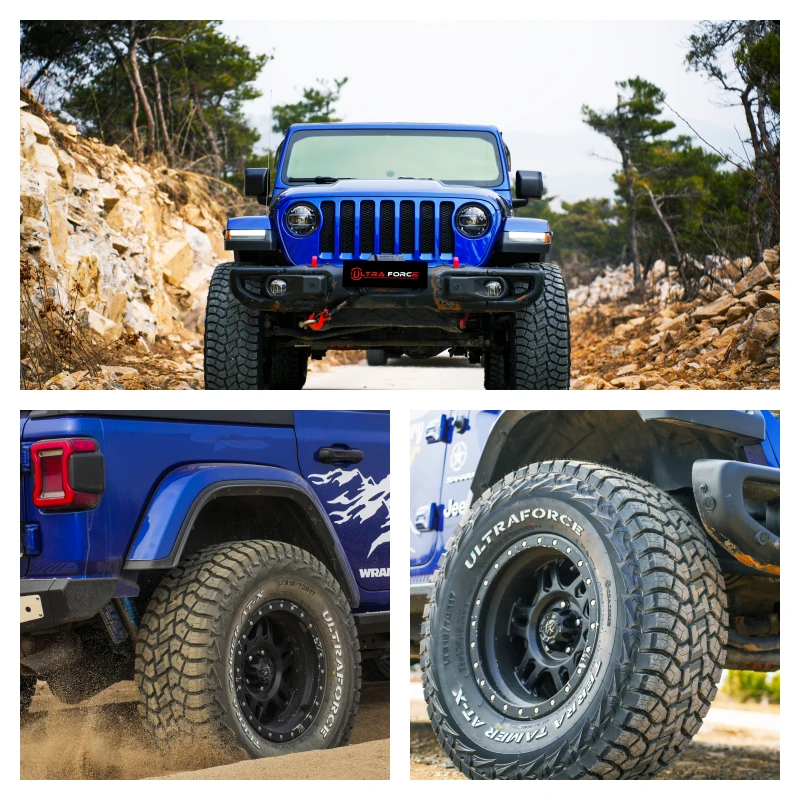
Factors Affecting the Lifespan of Mud Tires on the Road
1. Tire Composition and Design
The rubber compounds used in mud tires are typically softer than those found in standard road tires. This softness is crucial for gripping uneven surfaces off-road but can lead to quicker wear when exposed to the friction of asphalt. Tread design also plays a significant role. The large, aggressive lugs and open voids of mud tires are excellent for gripping in off-road conditions, but on the road, these lugs tend to wear out more quickly.
2. Driving Habits
Your driving habits have a major influence on how long mud tires last on the road. Aggressive driving, such as rapid acceleration, hard braking, and sharp cornering, can wear out the tread faster. Regularly driving at high speeds can also generate more heat, accelerating tread wear. To maximize the lifespan of your mud tires, smooth and steady driving is key.
3. Road Conditions
While mud tires are excellent for off-road terrain, road conditions play a significant role in their lifespan. Driving primarily on smooth highways or city streets will cause the tread to wear faster than it would on softer dirt roads. The friction generated by the pavement, particularly on hot days, will shorten the tire’s life.
4. Tire Pressure
Maintaining the correct tire pressure is critical to extending the life of any tire, but it’s especially important for mud tires on the road. Overinflated tires can wear unevenly and lose traction, while underinflated tires can generate excessive heat, leading to premature wear. It’s important to check tire pressure regularly and adjust it according to the manufacturer’s recommendations for road or off-road driving.
5. Weight Load
The weight of your vehicle and the load it carries will also impact how long mud tires last on the road. Heavier vehicles or those carrying heavy loads will exert more pressure on the tires, leading to faster wear. It’s crucial to be mindful of your vehicle’s weight limits and not overload it when using mud tires on paved roads.
Expected Lifespan of Mud Tires on the Road
On average, mud tires used primarily on the road will last between 20,000 to 40,000 miles, depending on the brand, quality, and how well they’re maintained. This is considerably lower than the lifespan of standard all-terrain tires, which can last between 50,000 to 70,000 miles under similar conditions.
To maximize the lifespan of your mud tires, consider rotating them regularly, maintaining the correct tire pressure, and driving conservatively. Additionally, keeping the tires properly aligned and balanced will help reduce uneven wear, especially when driving on paved surfaces.
Tips to Extend the Lifespan of Mud Tires on the Road
Regular Tire Rotation: Rotating your tires every 5,000 to 6,000 miles can help ensure even tread wear. This is particularly important for mud tires, as they tend to wear more quickly when used on pavement.
Proper Inflation: Always ensure that your tires are inflated to the correct pressure. This will not only extend the life of your tires but also improve your fuel efficiency and ensure better handling on the road.
Routine Maintenance: Align and balance your tires regularly, and check for any signs of uneven wear, cuts, or punctures. This simple maintenance can prevent premature failure.
Drive Mindfully: Avoid aggressive driving behaviors like hard braking, rapid acceleration, and sharp turns. These actions put unnecessary strain on the tires and can lead to faster wear.
Monitor Tread Depth: Use a tread depth gauge to monitor your tire’s wear over time. Once the tread depth reaches a minimum of 2/32 of an inch, it’s time to replace the tires.
Off-Road vs. On-Road Driving Balance
If you’re a mud tire owner who enjoys off-road adventures but spends most of your time on paved roads, you may wonder if it’s worth the investment. Mud tires offer unparalleled off-road performance, but for predominantly on-road driving, you might want to consider a set of all-terrain tires or having two sets of tires—one for daily driving and one for off-road excursions.
Mud tires can handle on-road driving, but they aren’t optimized for it. They tend to be noisier, less fuel-efficient, and can wear out faster than traditional road tires. That said, if you frequently drive in areas with unpredictable weather or rough terrain, mud tires might still be the best choice.
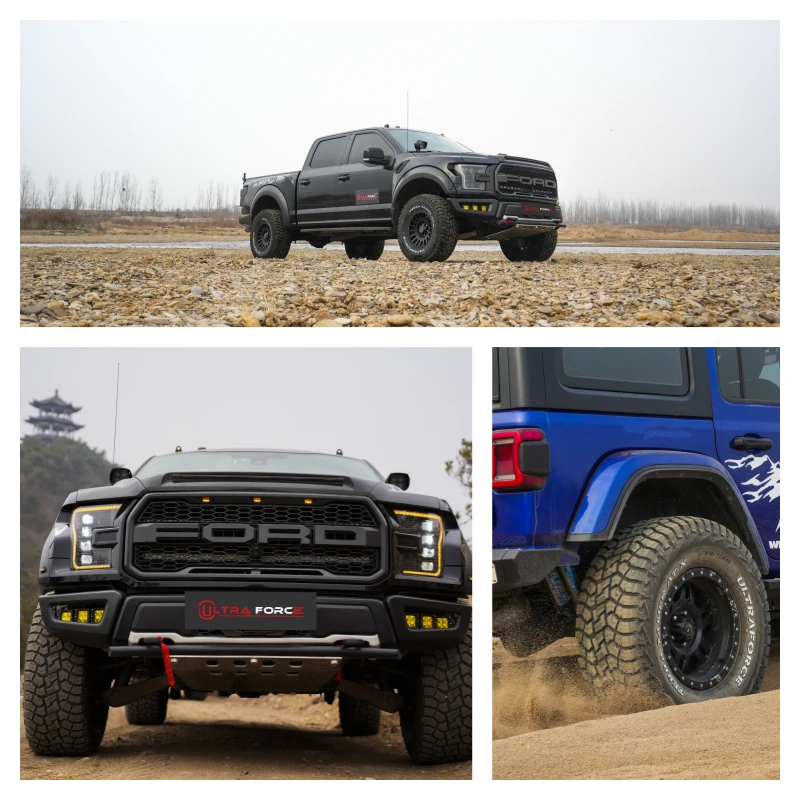
Mud Tires for The Road
Mud tires are specifically designed for off-road use, with deep, aggressive tread patterns and durable sidewalls that allow them to grip loose surfaces such as mud, sand, and rocks. But many drivers wonder: can mud tires also be used for everyday driving on paved roads?
Short Answer: Yes, But With Considerations
Yes, mud tires can be used on paved roads for daily driving, but there are some important factors to keep in mind. While they provide excellent performance off-road, their design is not optimized for on-road driving. Mud tires tend to be louder, wear out faster, and can negatively impact fuel efficiency when used primarily on asphalt.
Performance on Paved Roads
Mud tires are constructed from softer rubber compounds and feature large, widely spaced lugs for traction in mud and uneven surfaces. On smooth asphalt, however, these same features can create challenges. The wide voids between the tread blocks mean less rubber is in contact with the road, reducing the tire’s ability to maintain smooth handling and grip during high-speed driving. This can lead to a noisier ride and sometimes a “floating” sensation, particularly in wet conditions.
In a study comparing different types of off-road tires, mud tires were found to produce about 20-30% more road noise than all-terrain tires. This can be a significant factor if you're using the vehicle for long commutes or daily city driving.
Wear and Tear
On paved roads, mud tires generally wear down faster than all-terrain or highway tires. This is largely due to the softer rubber compounds used in their construction, which are designed to grip rough terrain rather than withstand the friction generated on smooth surfaces. According to tire longevity data, mud tires typically last between 20,000 to 40,000 miles on paved roads, compared to 50,000 to 70,000 miles for all-terrain tires under similar conditions.
That said, UltraForce Tires mud tires are engineered to maximize durability, even when used on roads. With proper maintenance, including regular tire rotation, balancing, and proper inflation, you can extend the lifespan of your mud tires.
Fuel Efficiency
Fuel efficiency can also be affected by the use of mud tires on paved roads. The deep, chunky tread pattern creates more rolling resistance, meaning your vehicle will have to work harder to maintain speed. Studies suggest that using mud tires can reduce fuel efficiency by 5-10%, depending on driving conditions. If fuel economy is a priority, it might be worth considering a second set of tires for everyday use or investing in UltraForce's all-terrain models that balance on- and off-road performance.
When to Replace Mud Tires
Mud tires, like all tires, have a finite lifespan. Knowing when to replace them is crucial not only for performance but also for safety. But how do you know when it’s time to swap out your old mud tires for new ones?
Tread Depth
The first and most obvious indicator is tread depth. For off-road and mud tires, the depth of the tread plays a huge role in their ability to provide traction. The standard recommendation for any tire is to replace it when the tread depth reaches 2/32 of an inch. However, for mud tires, you may want to replace them sooner — at around 4/32 to 5/32 inches. Once the tread gets too shallow, mud tires lose their ability to channel out mud, water, and debris, severely compromising their performance off-road.
You can use a tread depth gauge to measure the depth or even perform the “penny test.” Insert a penny into the tread groove with Lincoln’s head facing down. If you can see the top of Lincoln’s head, it’s time for a replacement.
Uneven Wear
Another sign to look for is uneven wear. Mud tires can develop uneven wear patterns, especially if they aren’t rotated regularly or if there’s an alignment issue. If you notice that one side of the tire is wearing out faster than the other or if the tire develops bald spots, this can be an indication that the tires need to be replaced.
This is where UltraForce Tires comes in—our tires are designed to minimize uneven wear through advanced tread and sidewall designs. Still, regular rotation and balancing are crucial to ensuring that wear is even across the tire.
Age of the Tires
Even if your mud tires still have decent tread, they can degrade over time. The rubber compounds in the tire can become brittle and lose their flexibility, which is particularly dangerous for off-road tires that need to grip uneven surfaces. Most manufacturers recommend replacing tires every 5-6 years, regardless of the remaining tread. You can check the age of your tires by looking at the DOT number on the sidewall, which will indicate the week and year the tire was manufactured.
Cracks and Damage
If you notice visible cracks in the rubber, bulges, or sidewall damage, it’s time to replace your mud tires. Off-road driving can expose tires to sharp rocks, sticks, and other debris that may cause structural damage. If you see any signs of cracking or punctures, particularly on the sidewalls, don’t hesitate to get your tires inspected by a professional.
Performance Decrease
Finally, if you notice a decrease in performance—such as less traction in mud or slippery conditions, or an increase in road noise—it may be time to consider new tires. UltraForce Tires offers advanced mud tires designed to maintain performance over time, but all tires eventually wear out. If your vehicle no longer feels as stable, particularly in off-road conditions, new tires can restore the confidence and safety you need.
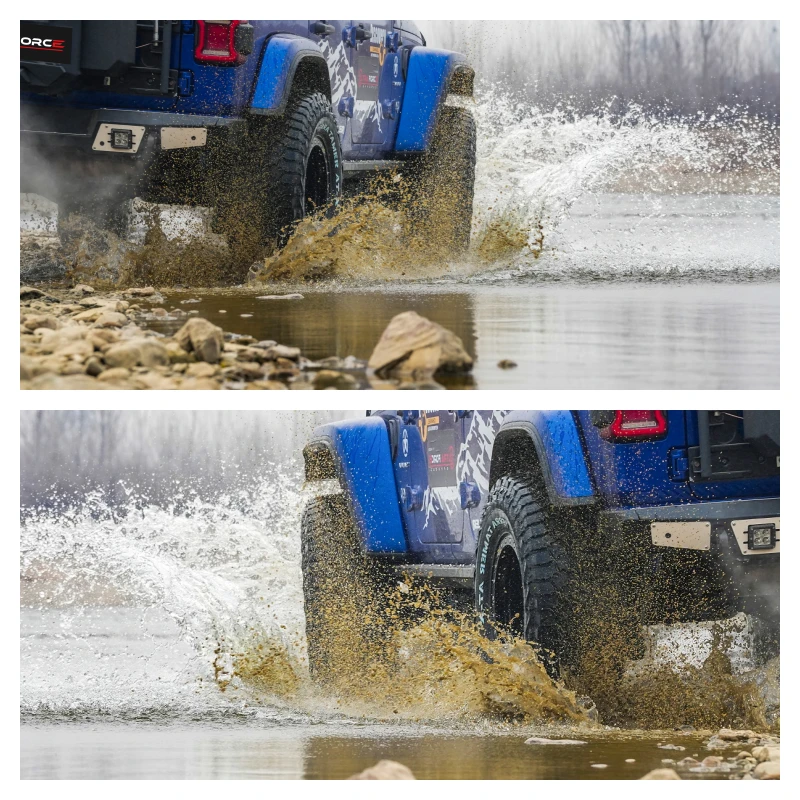
The Best Way to Store Mud Tires When Not in Use
Storing mud tires correctly when they’re not in use is crucial to prolonging their lifespan and maintaining their performance. Whether you have a second set of tires for seasonal use or are rotating between on-road and off-road tires, proper storage techniques will help you get the most out of your investment.
Clean the Tires Thoroughly
Before storing your mud tires, it's important to clean them thoroughly. Mud tires are designed to deal with dirt, mud, and debris, but leaving that material on the tires during storage can cause long-term damage. Dirt and grime can lead to the degradation of the rubber, and trapped moisture can promote cracking. Clean the tires using water, mild soap, and a soft brush to scrub away all contaminants.
For UltraForce Tires products, which are designed to handle extreme conditions, proper cleaning before storage ensures that the materials retain their integrity for when you're ready to hit the off-road trails again.
Choose the Right Location
Tires should always be stored in a cool, dry place, away from direct sunlight and heat sources. Sunlight can cause the rubber to dry out and crack over time, while heat can accelerate the breakdown of the tire’s components. A climate-controlled garage or basement is ideal. Avoid storing tires in outdoor sheds or areas that experience extreme temperature fluctuations.
Positioning the Tires
How you store the tires also matters. If the tires are still mounted on rims, it’s best to hang them or stack them flat on top of each other. Hanging the tires on the rims prevents any warping or flat spots from developing. If the tires are not mounted, they should be stored vertically (standing up) rather than stacked. This helps prevent any deformation of the tire shape over long periods.
For UltraForce mud tires, storing them correctly preserves the shape and ensures the tread remains effective when you're ready to use them again.
Use Tire Covers or Bags
To protect your tires from dust, moisture, and sunlight, consider using tire covers or bags. These covers not only keep dirt away but also help maintain consistent temperature and humidity levels around the tire. Tire bags are affordable and available from most tire retailers. For extra protection, you can also place silica gel packs or other moisture absorbers inside the bags to reduce the risk of mold or moisture damage.
Maintain Optimal Pressure (If Mounted)
If your mud tires are mounted on rims, maintaining the correct tire pressure is important during storage. Deflated tires can develop flat spots, particularly if left in one position for an extended period. Make sure to check and adjust the tire pressure periodically to keep it within the recommended range.
Regular Inspection
Even in storage, it’s a good idea to inspect your tires every few months. Look for signs of cracking, dry rot, or other damage. Catching any issues early can help you address them before they compromise the tire’s performance.
UltraForce Tires’ Mud Tire Range
At UltraForce Tires, we understand the need for tires that not only deliver exceptional off-road performance but also perform reliably on paved roads. Our mud tires are designed with advanced technology that provides the perfect balance between durability, traction, and comfort. Whether you're navigating challenging off-road trails or commuting on highways, UltraForce Tires is your go-to brand for superior performance.
Why Choose UltraForce Tires?
Durable Construction: Our mud tires are built using the highest quality materials to withstand the rigors of off-road adventures while offering long-lasting performance on roads.
Customized Tread Design: We offer customization services, including tread and sidewall design, to ensure your tires meet the exact specifications of your driving conditions, whether it’s rocky trails, muddy paths, or paved highways.
Superior Traction: With decades of experience in product development, our tires are engineered to provide excellent grip in various terrains and weather conditions, making them the ultimate companions for off-road enthusiasts.
Global Reputation: UltraForce Tires is a leading global exporter, known for offering tires that combine quality, innovation, and performance. We serve customers worldwide, ensuring their off-road and on-road needs are met with the best products available.
Complete Tire Solutions: Whether you need tires for daily driving or extreme off-road adventures, we offer a full range of off-road tires designed to excel in performance, durability, and traction.
Conclusion
If you’re in the market for high-performance, durable mud tires, look no further than UltraForce Tires. Our products are designed to offer superior performance on both off-road trails and paved streets, making your driving experience safe, reliable, and enjoyable in all conditions. Reach out to us today to discover how we can help you find the perfect tire solution for your needs.
